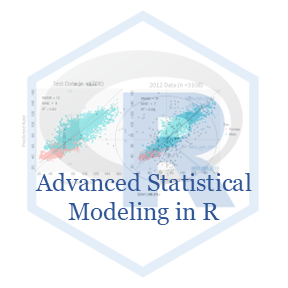Multivariate Statistics
Multivariate statistics is a branch of statistics that deals with the analysis of data sets that have more than one variable. In other words, it is the study of the relationships between multiple variables in a data set. Multivariate analysis techniques are used to understand the complex interactions among different variables and how they influence each other. These techniques include methods for describing and summarizing data, testing hypotheses about relationships between variables, and predicting the values of one variable based on the values of others. Examples of multivariate analysis techniques include principal component analysis, factor analysis, cluster analysis, discriminant analysis, canonical correlation analysis, and multiple regression analysis. In this chapter, we will explore some of the key multivariate analysis techniques and their applications in R.
- Principal Component Analysis (PCA)
- Factor Analysis
- Correspondence Analysis
- Discriminant Analysis
- Multivariate Analysis of Variance (MANOVA)
- Partial Least Squares Regression
Introduction to Multivariate Statistics
Before you delve into multivariate analysis, it is essential to understand what multivariate data is. Multivariate data involves multiple variables or measurements for each individual or observation in a dataset. These variables are usually interrelated and are often measured simultaneously.
For example:
In a health survey: Variables might include age, weight, blood pressure, and cholesterol level for each individual.
In a market survey: Variables might include customer age, income, satisfaction level, and purchase frequency.
The structure of multivariate data usually consists of rows for individuals (observations) and columns for variables (features). Analyzing this data is essential for understanding the relationships and patterns among multiple variables
Multivariate statistics is a branch of statistics that deals with the analysis of data sets that have more than one variable. In other words, it is the study of the relationships between multiple variables in a data set.
Multivariate analysis techniques are used to understand the complex interactions among different variables and how they influence each other. These techniques include methods for describing and summarizing data, testing hypotheses about relationships between variables, and predicting the values of one variable based on the values of others.
Examples of multivariate analysis techniques include principal component analysis, factor analysis, cluster analysis, discriminant analysis, canonical correlation analysis, and multiple regression analysis.
Key Objectives of Multivariate Analysis
Understand Relationships: Identify how variables are related to one another (e.g., correlation or causation).
Dimensionality Reduction: Simplify the data by reducing the number of variables while retaining essential information (e.g., Principal Component Analysis).
Classification and Prediction: Assign observations to predefined groups or predict outcomes using multiple variables (e.g., Logistic Regression, Decision Trees).
Exploration of Structures: Discover patterns, clusters, or latent structures in the data (e.g., Cluster Analysis, Factor Analysis).
Hypothesis Testing: Test hypotheses involving multiple variables simultaneously.
Common Multivariate Analysis Techniques
Here are some of the most commonly used multivariate analysis techniques and the corresponding R packages:
Principal Component Analysis (PCA): The
prcompfunction in base R can be used to perform PCA. The {FactoMineR} package also provides functions for PCA.Factor Analysis: The {psych} package provides functions for exploratory factor analysis (
fa) and confirmatory factor analysis (cfa).Canonical Correlation Analysis (CCA): The
canoncorrfunction in base R can be used to perform CCA. The {CCA} package also provides functions for CCA.Cluster Analysis: The {stats} package in base R provides functions for hierarchical clustering (
hclust) and k-means clustering (kmeans). The cluster package also provides additional clustering functions.Discriminant Analysis: The {MASS} package provides function for Linear Discriminant Analysis (
lda) and Quadratic Discriminant Analysis (qda).Multivariate Analysis of Variance (MANOVA): The {stats} package provides the
manovafunction for MANOVA.Multidimensional Scaling (MDS): The {MASS} package provides functions for MDS (
cmdscale).Partial Least Squares (PLS): The {pls} package provides functions for PLS regression and PLS path modeling.
Correspondence Analysis (CA) Analyzing the association between categorical variables is done using the CA approach. The connections between the categories of two or more categorical variables are found using this method.
Applications of Multivariate Analysis
Business and Marketing: Segment customers, predict sales, and optimize marketing strategies.
Healthcare: Diagnose diseases and study the effects of treatments on multiple health outcomes.
Finance: Analyze risks, portfolio optimization, and market trends.
Environmental Science: Study climate patterns, biodiversity, and ecosystem changes.


